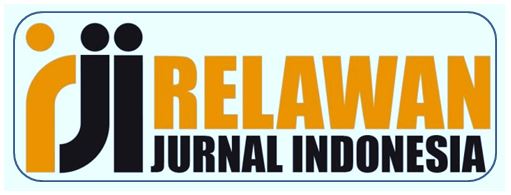The Effect of Interpersonal Communication Via WhatsApp on Students' Socialization Ability
DOI:
https://doi.org/10.59110/aplikatif.v2i1.122Keywords:
Communication, Interpersonal Communication, Socialization, WhatsAppAbstract
This study explores how interpersonal communication responses in WhatsApp influence the social skills of FIKOM class 2021 students at Mercu Buana University Yogyakarta. With the prevalence of WhatsApp as a communication medium, its impact on social interactions and individual socialization becomes significant. The research aims to analyze the factors affecting perceptions and social skills in WhatsApp-mediated communication. A sample of 160 students was selected from a population of 266 students in the Faculty of Communication and Multimedia. The study utilized a quantitative approach with a questionnaire as the data collection tool, focusing on two variables: interpersonal communication responses (X) and student social skills (Y). Using SPSS software, the data analysis revealed that interpersonal communication responses accounted for 47.7% of the influence, while other factors constituted 52.3%. The findings highlight the considerable influence of interpersonal communication responses in WhatsApp on the development of social skills among students. This study contributes to understanding the relationship between digital communication behavior and its impact on socialization and social skills.
References
Bakhri, S., Dyatmika, T., & Kamal, M. R. (2020). Pengaruh Kemampuan Menggunakan Teknologi Komunikasi, Sosialisasi Media Pembelajaran Online, Dukungan Keluarga dan Pengajar Terhadap Keaktifan Mahasiswa di Masa Pandemi Covid-19. Mediakita, 4(1), 19-36.
Christian, C. V., & Jatmika, D. (2018). Pengaruh persepsi komunikasi efektif dengan orang tua terhadap kecenderungan kenakalan remaja di SMA X Jakarta. Jurnal Psikologi Ulayat, 5(2), 157-168.
Utari, Desi Ulan. (2023). Efek Layanan Informasi Terhadap Keterbukaan Diri dalam Komunikasi Interpersonal Peserta Didik Kelas VIII Smp Muhammadiyah 48 Medan T.A 2019/2020. 3 (2).
Devi, S. S., & Siswati, S. (2018). Hubungan Antara Pengungkapan Diri Melalui Media Sosial Whatsapp Dengan Komunikasi Interpersonal Pada Siswa Semester Empat Sma Negeri 1 Salatiga (Doctoral dissertation, Universitas Diponegoro).
Devito, Joseph A. 2013. The Interpersonal Communication Book Ed.14th. Pearson: London.
Effendy, Onong Uchjana. (2000). Ilmu Komunikasi, Teori dan Praktek. Bandung: Remaja Bandung Rosdakarya.
Bangun, Mic Finanto Ario., Muzzamil, Ferdy., & Nugraha, Andreas Corsini Widya. (2021). Efek Komunikasi Interpersonal Penyesuaian Diri pada Mahasiswa Universitas Bhayangkara Jakarta Raya yang Menjalani Kuliah Kerja Nyata. 2 (2).
Rahartri, L. I. P. I. (2019). "Whatsapp" Media Komunikasi Efektif Masa Kini (Studi Kasus Pada Layanan Jasa Informasi Ilmiah Di Kawasan Puspiptek. Visi Pustaka: Buletin Jaringan Informasi Antar Perpustakaan, 21(2), 147-156.
Sikape, H. J. (2014). Persepsi Komunikasi pengguna media sosial pada blackberry messenger twitter dan facebook oleh siswa SMAN 1 tahuna. Acta diurna komunikasi, 3(3).
Suranto, A.W. (2011). Komunikasi Interpersonal. Graha Ilmu: Yogyakarta.
Umami, N., & Suja, I. S. (2019). Pengaruh penggunaan media sosial whatsapp terhadap keaktifan siswa pada mata pelajaran ekonomi bisnis kelas X SMK Negeri 2 Boyolangu tahun ajaran 2018/2019. Jurnal Pendidikan Ekonomi, 12(2), 94-98.
Downloads
Published
How to Cite
Issue
Section
License
Copyright (c) 2023 Eunike Chris Imanuela, Angelia Angelia, Dearma Purba

This work is licensed under a Creative Commons Attribution-ShareAlike 4.0 International License.














